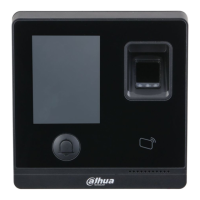III
Important Safeguards and Warnings
This Chapter describes the contents covering proper handling of the standalone, hazard
prevention, and prevention of property damage. Read these contents carefully before using the
standalone, comply with them when using, and keep it well for future reference.
Operation Requirement
Do not place or install the standalone in a place exposed to sunlight or near the heat
source.
Keep the standalone away from dampness, dust or soot.
Keep the standalone installed horizontally on the stable place to prevent it from falling.
Do not drop or splash liquid onto the standalone, and make sure there is no object filled
with liquid on the standalone to prevent liquid from flowing into the standalone.
Install the standalone in a well-ventilated place, and do not block the ventilation of the
standalone.
Operate the standalone within the rated range of power input and output.
Do not dissemble the standalone.
Transport, use and store the standalone under the allowed humidity and temperature
conditions.
Electrical Safety
Improper battery use might result in fire, explosion, or inflammation.
When replacing battery, make sure the same model is used.
Use the recommended power cables in the region and conform to the rated power
specification.
Use the power adapter provided with the standalone; otherwise, it might result in people
injury and device damage.
The power source shall conform to the requirement of the Safety Extra Low Voltage (SELV)
standard, and supply power with rated voltage which conforms to Limited power Source
requirement according to IEC60950-1. Please note that the power supply requirement is
subject to the device label.
Connect the device (I-type structure) to the power socket with protective earthing.
The appliance coupler is a disconnection device. When using the coupler, keep the angle
for easy operation.
WARNING
This device has been tested and found to comply with the limits for a Class B digital device,
pursuant to part 15 of the FCC Rules. These limits are designed to provide reasonable
protection against harmful interference in a residential installation. This device generates uses
and can radiate radio frequency energy and, if not installed and used in accordance with the
instructions, may cause harmful interference to radio communications. However, there is no
guarantee that interference will not occur in a particular installation. If this device does cause

